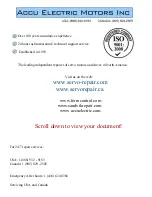
5-33
H
Torque Characteristics (With 3-m Standard Cable and 100-VAC Input)
R88M-U03030L(A)
R88M-U03030WA
R88M-U05030L(A)
R88M-U05030VA
R88M-U10030L(A)
R88M-U10030VA
Frequent use
Continuous use
Frequent use
Continuous use
Frequent use
Continuous use
R88M-U20030L(A)
R88M-U20030WA
R88M-U30030LA
R88M-U30030WA
Frequent use
Continuous use
Frequent use
Continuous use
H
Servomotor and Mechanical System Temperature Characteristics
•
U-series AC Servomotors use rare earth magnets (neodymium-iron magnets). The temperature co-
efficient for these magnets is approximately -0.13%/
°
C. As the temperature drops, the Servomotor’s
momentary maximum torque increases, and as the temperature rises the Servomotor’s momentary
maximum torque decreases. When the normal temperature of 20
°
C and -10
°
C are compared, the
momentary maximum torque increases by approximately 4%. Conversely, when the magnet warms
up to 80
°
C from the normal temperature of 20
°
C, the momentary maximum torque decreases by
approximately 8%.
•
Generally, in a mechanical system, when the temperature drops the friction torque increases and the
load torque becomes larger. For that reason, overloading may occur at low temperatures. In particu-
lar, in systems which use deceleration devices, the load torque at low temperatures may be nearly
twice the load torque at normal temperatures. Check with a current monitor to see whether overload-
ing is occurring at low temperatures, and how much the load torque is. Likewise, check to see wheth-
er there abnormal Servomotor overheating or alarms are occurring at high temperatures.
•
An increase in load friction torque increases the apparent load inertia. Therefore, even if the Servo
Driver parameters are adjusted at a normal temperature, there may not be optimal operation at low
temperatures. Check to see whether there is optimal operation at low temperatures too.
Specifications
Chapter 5
















































